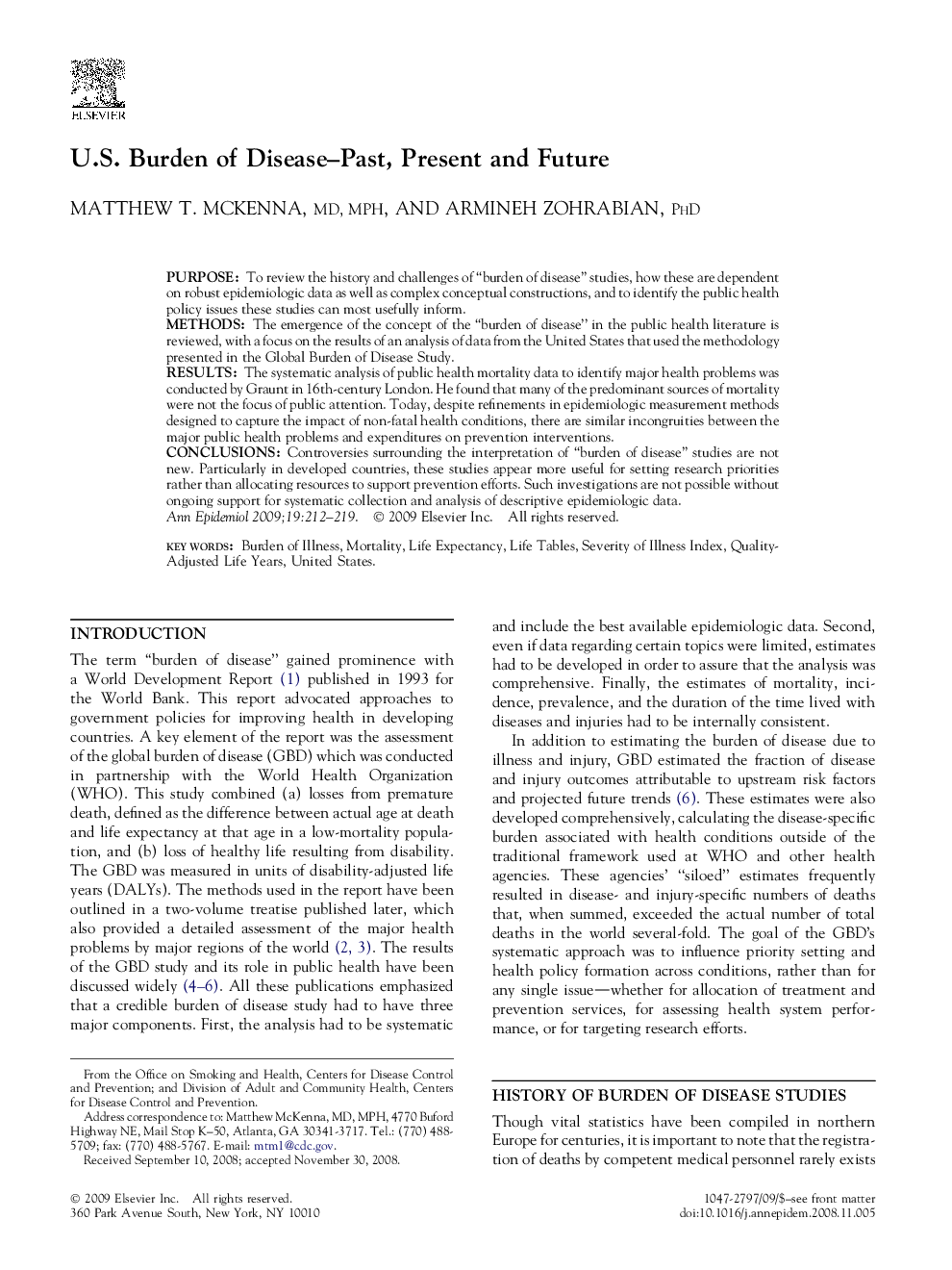| Article ID | Journal | Published Year | Pages | File Type |
|---|---|---|---|---|
| 6148664 | Annals of Epidemiology | 2009 | 8 Pages |
PurposeTo review the history and challenges of “burden of disease” studies, how these are dependent on robust epidemiologic data as well as complex conceptual constructions, and to identify the public health policy issues these studies can most usefully inform.MethodsThe emergence of the concept of the “burden of disease” in the public health literature is reviewed, with a focus on the results of an analysis of data from the United States that used the methodology presented in the Global Burden of Disease Study.ResultsThe systematic analysis of public health mortality data to identify major health problems was conducted by Graunt in 16th-century London. He found that many of the predominant sources of mortality were not the focus of public attention. Today, despite refinements in epidemiologic measurement methods designed to capture the impact of non-fatal health conditions, there are similar incongruities between the major public health problems and expenditures on prevention interventions.ConclusionsControversies surrounding the interpretation of “burden of disease” studies are not new. Particularly in developed countries, these studies appear more useful for setting research priorities rather than allocating resources to support prevention efforts. Such investigations are not possible without ongoing support for systematic collection and analysis of descriptive epidemiologic data.
